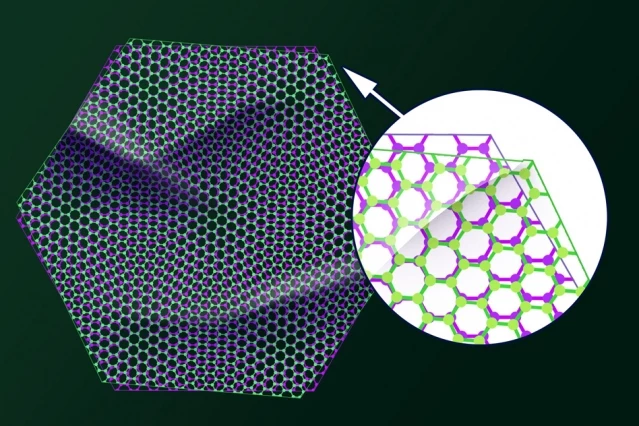They don’t call graphene a “wonder material” for nothing – it’s ultra-thin, ultra-strong, and has some weird electrical properties. MIT researchers previously found a particularly strange pattern emerged in “twisted” graphene structures, and now they’ve studied it more closely and found it works better with more layers.
Graphene is made up of sheets of carbon that are just a single atom thick. That makes them functionally two-dimensional, since electrons moving through them can only move forward/backward and side-to-side, not above and below each other. That allows graphene to conduct electricity extremely well.
When graphene layers are stacked on top of each other, their electrical properties change. And in 2018, an MIT team discovered something incredible occurs when two of these layers were stacked slightly askew. By twisting the top layer to a “magic angle” of 1.1 degrees off-kilter, the double-layer structure could suddenly shift between being an electrical insulator and a superconductor.
In two new studies, the same team has now examined these twisted bilayer graphene structures even closer. In the first, the team tested the effects of different angles, using a scanning technique that was precise enough to measure angle differences down to 0.002 degrees.
The team found that the strange insulation and superconducting properties were more pronounced when the range of angles stuck closer to 1.1 degrees. These effects seemed to weaken in stacks that had a wider range of angles.
“This is the first time an entire device has been mapped out to see what is the twist angle at a given region in the device,” says Pablo Jarillo-Herrero, an author on the study. “And we see that you can have a little bit of variation and still show superconductivity and other exotic physics, but it can’t be too much. We now have characterized how much twist variation you can have, and what is the degradation effect of having too much.”
In the second study, the researchers experimented with more layers. When they stacked four layers of graphene and twisted them to the magic angle, the structure became an insulator, just as the two layer version had. But this time, the team was able to use an electric field to fine-tune the insulating ability, which wasn’t possible previously.
This work is still in the very early stages, but the team says that eventually these twisted graphene systems could make for some unusual electronic devices.
The two papers were both published in the journal Nature.
Source: MIT




